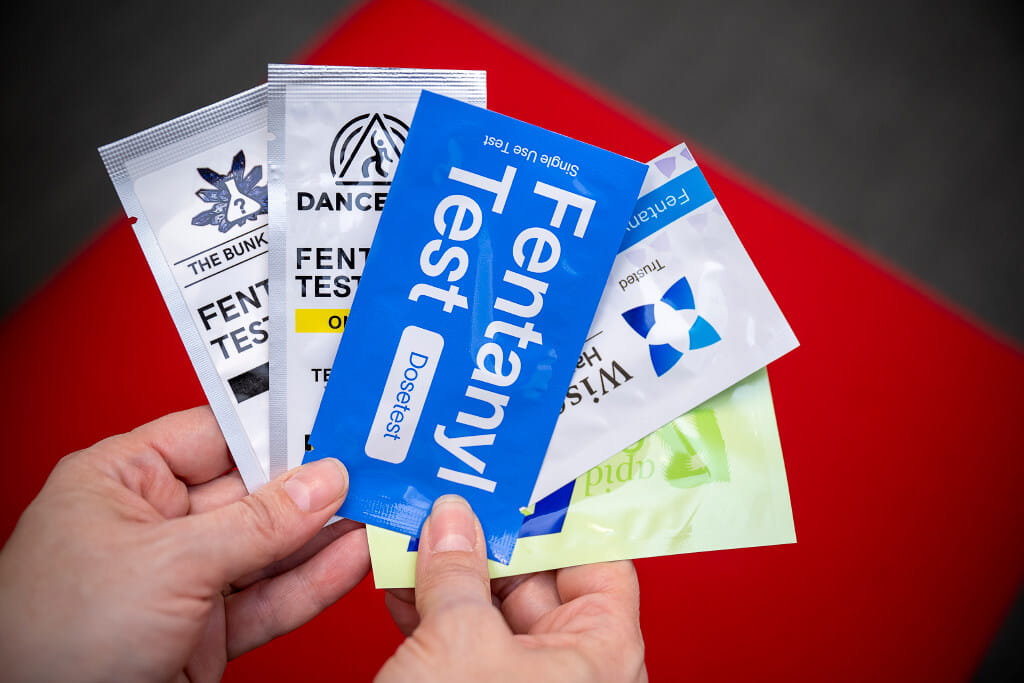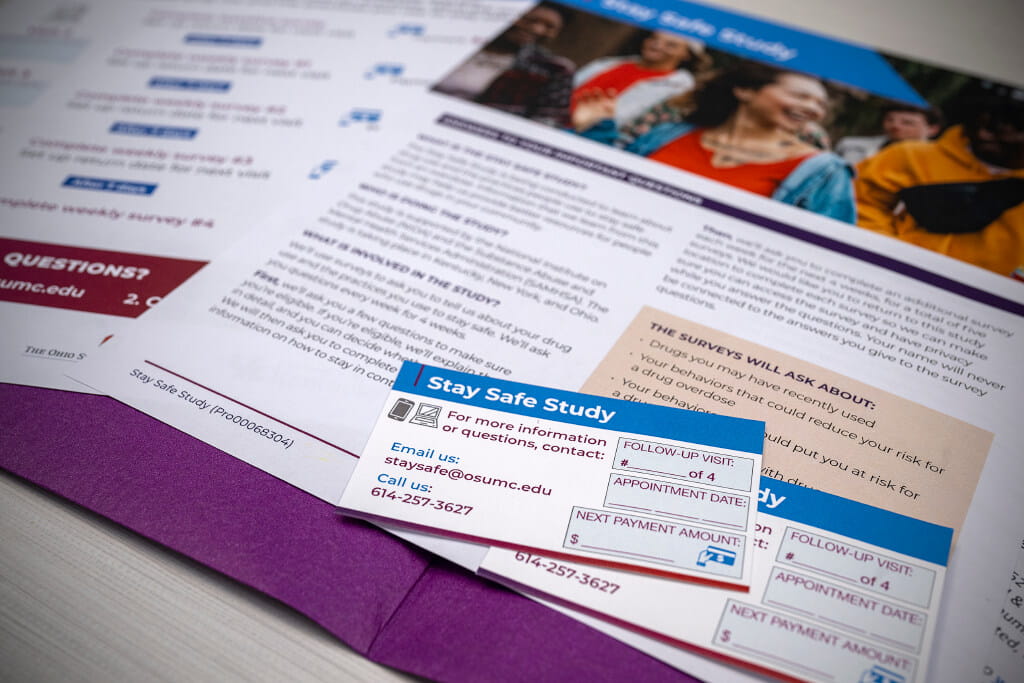May 31, 2023
COLUMBUS, Ohio – Leveraging the HEALing Communities Study infrastructure, researchers are testing whether there is an association between fentanyl test strip use and overdose risk reduction behaviors among people who use drugs over a 28-day observation period. The study, known as the Stay Safe Study, is taking place in Kentucky, New York, and Ohio. Fentanyl test strips are legal to distribute or possess in all three states.
“We want to know if people who use fentanyl test strips compared to people who don’t, are more likely to engage in certain overdose risk reduction behaviors. Given the prevalence of fentanyl in our drug supply, this study is critical to identify how to best reduce risk of overdoses,” said Bridget Freisthler, PhD, professor at The Ohio State University College of Social Work who is now leading the Ohio HEALing Communities Study. “We want to learn about drug use, and what people use to stay safe from an overdose. Information gleaned from this study may help us provide better resources for people who use drugs in our communities.”
 The Ohio arm of the Stay Safe Study, led by Janet Childerhose, PhD, and Soledad Fernandez, PhD at The Ohio State University Wexner Medical Center and College of Medicine, will also examine factors that encourage or prevent the use and distribution of fentanyl test strips at individual and organizational levels.
The Ohio arm of the Stay Safe Study, led by Janet Childerhose, PhD, and Soledad Fernandez, PhD at The Ohio State University Wexner Medical Center and College of Medicine, will also examine factors that encourage or prevent the use and distribution of fentanyl test strips at individual and organizational levels.The Stay Safe Study is being conducted as part of the HEALing Communities Study, the largest implementation study ever conducted in addiction research. The HEALing Communities Study is investigating how to implement evidence-based practices to address opioid misuse, opioid use disorder (OUD), and opioid overdose at the local level.
The study is supported by the National Institute on Drug Abuse, part of the National Institutes of Health (NIH), through the Helping to End Addiction Long-term Initiative, or NIH HEAL Initiative, and the Substance Abuse and Mental Health Services Administration.
“People may not realize they are consuming fentanyl, especially if it has been mixed into or sold as other drugs such as heroin, cocaine, or counterfeit pills. Because it doesn’t take much for a dose of fentanyl to be lethal, using a drug that has been contaminated with or replaced by fentanyl can greatly increase your risk of overdose,” said Childerhose, assistant professor at Ohio State. She’s a medical anthropologist who investigates the ethics and implementation of harm reduction strategies to prevent fatal overdose in the United States and Canada.
For the Ohio arm of the Stay Safe Study, researchers plan to recruit 250 study participants in Ohio to confidentially survey about their drug use and the practices they use to stay safe. After determining someone is eligible to participate in the study, researchers will survey them every week for 4 weeks. Study participants will be asked about:
- Drugs they may have recently used, such as heroin, fentanyl, cocaine, methamphetamine, or medications that were not prescribed for them.
- Their behaviors that could reduce their risk for a drug overdose.
- Their behaviors that could put them at risk for a drug overdose.
- Their experiences using fentanyl test strips and with drug overdose.
 Researchers will also interview 40 of the participants. All enrolled participants will be eligible to opt into a biomarker test. This consists of a short survey about the previous 48 hours of their drug use and an oral swab that the participants will use to swab their own mouth.
Researchers will also interview 40 of the participants. All enrolled participants will be eligible to opt into a biomarker test. This consists of a short survey about the previous 48 hours of their drug use and an oral swab that the participants will use to swab their own mouth. The team will send the swab to a contracted lab to produce a report. The purpose of the biomarker test is to learn what substances, including fentanyl, participants may have in their body and to understand whether participants are aware of what’s in their body.
Participants will be compensated for their time to participate in the research.
“Over the past decade, we’ve seen a dramatic rise in drug overdose deaths in the United States caused by fentanyl. Our study is a step in the right direction to prevent these needless overdose deaths,” said Fernandez, professor, vice chair and director for Ohio State’s Center for Biostatistics.
Six Ohio partner organizations have joined the study, including:
- Brown County, Prevention Point
- Butler County, Regional Harm Reduction Collaborative
- Clermont County, The Exchange Project, Clermont Mercy Hospital
- Cuyahoga County, a harm reduction organization
- Franklin County, SafePoint
- Scioto County, SHRPS, Portsmouth City Public Health
For more information about the study, email staysafe@osumc.edu or call 614-257-3627.
The Stay Safe Study is supported by the National Institute on Drug Abuse through the NIH HEAL Initiative under award numbers UM1DA049394, UM1DA049406, UM1DA049412, UM1DA049415, and UM1DA049417. The content is solely the responsibility of the authors and does not necessarily represent the official views of the National Institutes of Health.
# # #
The Helping to End Addiction Long-term® Initiative, or NIH HEAL Initiative®, is an NIH-wide effort to speed scientific solutions to stem the national opioid public health crisis. Launched in April 2018, the initiative is focused on improving prevention and treatment strategies for opioid misuse and addiction and enhancing pain management. For more information, visit: https://heal.nih.gov.
Media Contact: Eileen Scahill, Wexner Medical Center Media Relations, Eileen.Scahill@osumc.edu
